Business Transition
- Home
- Business Transition
BUSINESS TRANSITION
__________________________
BUSINESS TRANSITION BASED OPERATIONAL EXCELLENCE
__________________________
ENERGY TRANSITION INDUSTRY AND OTHER
__________________________
Oil and Gas Industry
→
Thermal and Power Industry
→
_____________
OPERATIONAL EXCELLENCE OF OIL AND GAS INDUSTRY
Business Transition in Oil and Gas Industry
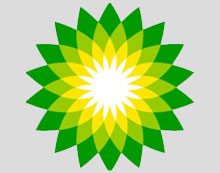
Oil and gas operators are under increasing pressure to simultaneously increase production while continually driving down costs, reducing carbon emissions and preparing for a net zero world.
Operators must balance these sometimes-contradictory aims through a blend of pragmatism, efficiency, and technological innovation leading to resilience.
Management Transition
Successful operators focus on operational excellence to align people, assets, and processes to deliver operational improvements and drive business value.
Operational excellence techniques such as Lean and Six Sigma offer a proven approach to achieving operational efficiencies and improving processes for oil and gas operators. Six Sigma provides a set of statistical tools that gives operators better insight into the causes of defects and process variation. Lean, on the other hand, provides a more culture-based approach that strives for continuous improvement.
But as the oil and gas industry faces historic challenges – the energy transition, decarbonization, volatile oil prices, and changing government regulation – operators are under pressure to deliver change and enhance operating performance like never before.
How can operational excellence help align top line economic growth with operational performance?
The five key imperatives of operational excellence for oil and gas companies have been- safety and compliance, driving production efficiency, optimising costs, supporting decarbonization and maintaining asset reliability.
Technology Transition
The arrival of industrial 5G is fundamentally changing the nature of technology partnerships across industries, merging traditional oil and gas companies deeper than ever into ecosystems consisting of connectivity providers, hyperscale cloud and compute providers and industry-specific OEMs.
For oil and gas players undertaking their Industry 4.0 journey, this raises many critical questions about the choices of network technology, upgrade paths, migration devices, certification, data and security, edge cloud computing, artificial intelligence (AI), automation and analytics platforms, and many technology choices which will likely raise further questions regarding personnel models, impacting talent acquisition and upskilling.
The only way for oil and gas to solve such challenges – as well as reduce the cost, complexity and risk – is to work collaboratively and extensively with ecosystem partners, leveraging the full spectrum of expertise. A good example of this is Shell’s participation in the Open AI
Energy Initiative taking place with partners across both energy and technology sectors. Cross-sectoral initiatives such as this will be critical to unlocking the transformational value of disruptive technologies in coming years. This will enable and accelerate innovation, agility, and reduce time to market of new services and solutions. Success depends on thinking strategically about combining the right partners and strengths across the value chain and forming ecosystems of varying sectors and customers.
Strategic transition
Safety and Compliance transition
→
Production Efficiency transition
→
Cost Optimization transition
→
Decarbonization transition
→
Asset Reliability transition
Safety and Compliance transition
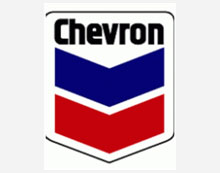
Chevron work is guided by two key principles: do it safely or not at all and there is always time to do it right.
Oil and gas are high stakes industries when it comes to risks to human life, the environment, and the resulting damage to a company’s reputation that can result from mishaps. BP’s 2010 Deepwater Horizon disaster, where an offshore rig blowout killed eleven workers and caused the largest marine oil spill in history, is an extreme example of what can happen when processes or machines break down or people fail to conduct a procedure in the right way.
No oil and gas operator wants to make the news for the wrong reason, and they want to ensure the safety and security of their employees. By continually identifying ways to improve processes and procedures, operational excellence can help oil and gas operators avoid potentially disastrous process break downs and failures.
Further, the industry is highly governed by environmental, financial and safety regulations. Well run operations with standard procedures that all workers can follow and understand helps to ensure that operators don’t breach important compliance requirements.
Production Efficiency transition
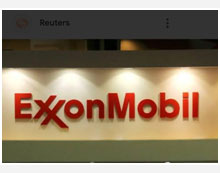
ExxonMobil is applying the latest in assistance software, including artificial intelligence, to improve manufacturing efficiencies at the company’s chemical and refining plants. Similar to a driver turning on their GPS to navigate traffic or a homeowner using a smart thermostat to keep their home at the perfect temperature, plant operators at ExxonMobil’s Baton Rouge and Baytown refineries are piloting new, intelligent tools able to recommend more ideal operating conditions or isolate an improvement needed in their complex decision making. These advancements could decrease energy use and reduce greenhouse gas emissions.
The oil and gas industry has been struggling with an unprecedented labour shortage as experienced baby boomers retire, younger generations turn away from oil and gas, and the pandemic-era reset has confronted all industries with a challenging labour market.
Many workers are growing tired of the cyclical boom and bust nature of oil and gas that sees regular hiring and firing and undermines the industry’s reputation as a dependable employer.
The problem is set to worsen. A recruitment survey last year by Brunel and Oilandgasjobsearch.com, found that almost half (43%) of workers want out of the energy sector in the next five years.
Operational Excellence can help operators identify ways to increase production efficiency to deal with the scarcity of human labor. By reducing complexity, eliminating the need for rework, and streamlining processes, operators can be more efficient per hour worked.
Additionally, automation will be crucial to helping maintain production levels. Streamlining and improving operating processes is the first step to digitizing and automating them to be able to do more with less.
Cost Optimization transition
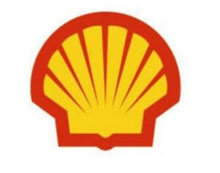
Shell’s goal with the development and adoption of Operational Optimisation Technologies is to ensure that all fuel – and money – is spent wisely as maritime transportation aims to become emissions-neutral by 2050.
While the recent oil price upswing has seen operators enjoy record profits, the party is not expected to last long. Oil and gas companies must position their business and operation for the next downturn as the industry’s long-established boom-and-bust cycle becomes more compressed.
Operational excellence can help oil and gas operators offset some of the commodity price fluctuations through a continuous focus on driving down costs, rationalizing digital platforms and eliminating non-value-added work. As cyclical downturns become more frequent, the capability to continually eliminate unnecessary costs has become a critical enabler.
Decarbonization transition

BP has set five aims to get to net zero by 2050 or sooner and five aims to help the world get there too.
Oil and gas companies are under increasing pressure from politicians, regulators, investors, and consumers to reduce or eliminate emissions.
While clearly decarbonization will have a huge technological component as companies produce innovative new fuels, solutions for carbon capture, and other breakthrough technologies, operational excellence has a significant role to play.
Efficiently run machines and operations are, by definition, less carbon intensive. Operational excellence can help oil and gas operators reduce energy use, limit the use of natural resources, and run processes more efficiently to drive out carbon from the value chain.
Operational excellence can help operators tackle decarbonization in the near term by lowering carbon intensity and has the additional benefit of driving out costs and improving efficiency.
Asset Reliability transition
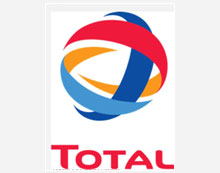
Total is building a multi energy company and operators want to maintain their assets to ensure peak performance and improve plant reliability. Operational excellence can help support the safe and efficient operation of machines and equipment by standardizing operating procedures, improving maintenance processes, and identifying common failure modes.
Operational excellence can help oil and gas companies leverage their strengths by continually improving processes, driving out costs, and paving the way for the low carbon future. Those operators who can successfully harness the power of continuous improvement will emerge competitive in tomorrow’s shifting landscape and secure the future of global energy.
At Total Energies, both refining and petrochemicals are integrated activities. Because their technical processes have much in common, they can leverage synergies to enhance the operating efficiency. At integrated industrial platforms, refining and petrochemicals units are located near each other, making it easier to share raw materials and production energy. This strategic choice delivers savings that make their sites more energy efficient and competitive.
→
SOUDI ARAMCO | TOTAL |
EXXON MOBIL | CHEVRON |
SHELL | BP |
_____________________________
How to overcome failing transition
Most of the reasons business transitions fail are based on inadequate preparation. This problem could be a result of unexpected circumstances, but the outcome is the same as if it were caused by a lack of preparedness.
A successful transition includes social and political adjustment, institutional adjustment and business interest and continuity.
The main goal of the transition phase is to prepare your body for the training to come. For those new to training, it also serves as an introduction to a training program, perhaps with new exercises to learn and new strategies to explore.
Transitioning employees in the workplace can be challenging. Here are some common issues: Resistance to change: Employees may resist transitioning due to fear or uncertainty. Skill gaps: Employees may lack the necessary skills for their new roles.
Difficulty with transitions can manifest in a number of ways: avoidance, anxiety, distraction, defiance, frustration or negotiation.
Why do companies avoid change?
Things like job security, habit, and economic factors have a massive influence on individual resistance. Organizational resistance is an organization’s tendency to resist change and want to maintain the status quo.
What are the benefits of successful transition? Effective transitions promote company’s learning and wellbeing. It improves company’s confidence in managing change. It fosters a sense of belonging and connectedness to the community. It grows partnerships and positive relationships between settings.
What are the six basic requirements for successful transition? Six steps for a successful transition. These core principles for success have informed a six-step approach to support an effective transition, consisting of aspire, manage, organize, plan, de-risk, and deliver.
How to build a business transition process for your company
Transition is the time between when you make your decision – to sell or merge, go public or retire – and the day it happens. A key group of advisors become your core transition team. To ensure that your company runs smoothly during this period, you and your team should draw up a formal transition plan.
What are the steps in the transition process? Identify your reason for change, take note of any industry regulations, perform a risk and impact assessment, get a cost estimate, implement change control,
implement your action plan, and set up quality assurance.
The transition stage represents a period where a company must deal with change. The transition may be positive or negative, and it could be due to many factors, including: Declining sales. Changing market conditions that are impacting the business.
Mergers, acquisitions, sold companies, and reorganizations are all examples of business transitions. A change describes a replacement. A transition describes a process. There is an evolution that happens with opportunities for learning and personal growth.
A transition plan may include an overview with a description of the project, the expected impact of the transition, and supporting documentation. Logistics: This section describes required resources such as software, staffing needs, or facilities to be used.
While Change management involves distinct individuals and roles, Transition management requires teams and staff to grasp and derive value from the 4 Ps: Purpose, Picture, Plan, and Part. Change is a business’s perpetual companion. It’s unavoidable and essential for corporate evolution and expansion.
Impact is determined by the degree to which a transition alters one’s daily life. The four major sets of factors that influence a company’s ability to cope with a transition: situation, self, support, and strategies.
Understanding and navigating the three phases of transitions – Endings, Neutral Zone, and New Beginnings – can help you adapt to change more effectively.
Business transition in UK
The net-zero program is widespread and all large businesses and public enterprises in the UK will have to fully develop climate transition plans by the end of next year.
Mergers, acquisitions, sold companies, and reorganizations are all examples of business transitions. A change describes a replacement. A transition describes a process. There is an evolution that happens with opportunities for learning and personal growth.
Four factors that will help you determine when to transition your business are – competitive dynamics,
capital market conditions, business attractiveness and readiness, and
shareholder and stakeholder objectives.
Brexit was the withdrawal of the United Kingdom (UK) from the European Union (EU). It officially took place at 23:00 GMT on 31 January 2020 (00:00 1 February 2020 CET). The UK is the only sovereign country to have left the EU.
The domestic regime that will operate in the UK from 1 January 2021, will be known as UK REACH. The REACH Statutory Instrument can be found on legislation.gov.uk and will make its way through the parliamentary processes, with the intention that it will come into force at the end of the transition period: The REACH etc. The UK REACH, the UK’s independent chemicals regulatory framework, became law on 1 January 2021. Anyone importing, manufacturing or distributing chemicals in GB and/or Northern Ireland needs to understand how the UK REACH and EU REACH rules might affect their business since 1 January 2021.
Which business is booming in UK?
While restaurants were hit hard by the pandemic, food and drink manufacturing remains one of the fastest-growing businesses. UK food and drink is a sector on the rise, being worth £112 billion as of 2021 and growing 4.2% in a year. The biggest business in UK today are
Shell, BP, Tesco, Rio Tinto Group etc.
_____________________________
OPERATIONAL EXCELLENCE OF THERMAL INDUSTRY
Business Transition in Thermal and Power Industry

[Chubu Electric Power Co Inc. generates and procures electricity and offers electric network related services. The company generates electricity using hydro, thermal, nuclear and renewable sources.]
The transition to renewable energy cannot happen overnight, and the industry must adapt to new technological and economic circumstances accordingly to meet its goals.The global power industry continues its steady march toward decarbonization, working diligently to incorporate more sustainable and renewable energy sources.
Resilience transition
How do you continue to provide a reliable service while running a profitable and sustainable operation in today’s changing landscape?
Leading power industry organizations recognize that operational excellence leads to more efficient resource consumption (fuel and water) and less byproduct waste (gas emissions and ash). Producing more with less increases your profit margins and decreases carbon footprint. This model is beneficial to power generators and transmission and distribution (T&D) organizations alike throughout the electric grid supply chain.
Adopting digital technologies that are integrated with operational data is paramount to achieving operational efficiency.
To improve operational efficiency, you should:
Maximize situational awareness
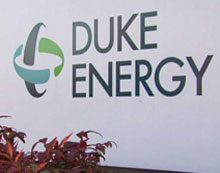
Duke Energy, a Fortune 150 company headquartered in Charlotte, N.C., is one of America’s largest energy holding companies. Our electric utilities serve 8.2 million customers in North Carolina, South Carolina, Florida, Indiana, Ohio and Kentucky, and collectively own 50,000 megawatts of energy capacity.
For years, electricity was generated in fossil-fueled, large, and centralized plants. It was then transmitted to the end users over vast distances. Now, electricity from renewable sources continues to displace these centralized plants. Every day, more distributed energy sources (DERs) are incorporated into the grid, increasing the bi-directional flow of electricity. Now, consumers can also be producers of electricity (prosumers), depending on the time of day or market conditions. This evolving model adds complexity to electricity generation, transmission, and distribution, requiring agile and more reliable operations.
Prioritise your data management infrastructure

RWE AG is a German multinational energy company headquartered in Essen. It generates and trades electricity in the Asia-Pacific region, Europe and Others.
RWE, Rheinisch-Westfälisches Elektrizitätswerk, was founded on 25 April 1898 as a public company in Essen, Germany. At the end of the 19th century, the use of electricity in agriculture, industry and private households was practically non-existent.
For any long-term strategy, the adoption of digital tools and the continued use of renewable energy increases the data complexity of industrial operations. Optimizing operational efficiency and productivity relies on visibility across the value chain. Decisions made by one stakeholder almost always rely on decisions made by other stakeholders. These decisions need to be made in real time, but must be based on data shared across the ecosystem. Data must be available to a broader set of consumers and decision-makers in real time, but it must be accessible without jeopardizing data integrity or operational safety.
Contextualize data with centralized visualization

SSE plc (formerly Scottish and Southern Energy plc) is a multinational energy company headquartered in Perth, Scotland. It is listed on the London Stock Exchange, and is a constituent of the FTSE 100 Index. For SSE, data alone is not enough. Context-
ualization is the key to actionable information. Visualization tools should provide operators not only with data, but with data that is presented in an accessible format, so as to promote collaboration and quick decision-making.
Transformation and Transition
We help electric-power generators enhance revenue, reduce costs, and transform fleet performance.
As lower gas prices, constrained demand, tighter environmental controls, and shifts to renewable energy combine to exert pressure on generators’ margins, operational excellence is at a premium. Our comprehensive approach helps clients simultaneously improve plant performance, strengthen central procurement, and optimize capital portfolios.
To maximize impact, we help clients address all value levers at the plant level: revenue, commercial optimization, fixed cost, and variable cost, including fuel cost. We embed capability building into project design so that clients increasingly rely on their own resources as the program is scaled up.
We work with many of the world’s largest power-generation fleets to secure lasting improvements in frontline operations. We help our clients develop capabilities to build a strong foundation for performance excellence. We provide access to an unparalleled global network of specialists who have deep expertise and hands-on experience in the power industry, lean operations, and energy efficiency.
Portfolio and operational risk management

Tenaga Nasional Berhad (TNB) is the largest electricity utility in Malaysia. With our core business of providing electricity to the country’s businesses, homes and industries, we are a key contributor to Nation building. Our activities represent the entire electricity production and supply value chain.
The top 10 competitors in TNB’s competitive set are YTL Power, Malakoff, MMC Corporation Berhad, Sarawak Energy Berhad, Ranhill, Indah Water Konsortium, Petronas, Lukoil, Petrobras and Exxon Mobil. Together they have raised over 38.2B between their estimated 279.4K employees.
Tenaga Nasional Berhad (200866-W) is a leading Malaysian utility company in Asia with an international presence in the United Kingdom, Kuwait, Turkiye, Saudi Arabia, and India. Within the renewable energy space, as of December 2022, TNB has a total gross portfolio of 2,896MW in Malaysia (including 2,536.1MW of large hydro) and 993MW across the UK, Turkiye, and India comprising mainly solar, wind, and hydro energy generation assets.
In addition to being the nation’s primary electricity generation enterprise, TNB also transmits and distributes all the electricity in Peninsular Malaysia, Sabah and the Federal Territory of Labuan. As of 31 December 2022, TNB supplies electricity to approximately 10.6 million customers.
TNB distinctive field-tested process, supported by learning modules, IT packages, and lean techniques, helps clients identify improvement opportunities, generate and evaluate ideas, set priorities, and track results. It tailor each program to the relevant generation technology.
Performance transition
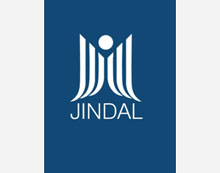
JITPL has two units each having 600 MW capacity, were fully commissioned and is in operation since 2015. JITPL’s 1200 MW Power station is in proximity to the coal mines.
The pragmatic emphasis on value creation enables clients to capture operational gains quickly, adjust performance in real time, and track progress effectively. To ensure that transformation delivers continuous improvement, the focus shall be on long-term shifts in mind-sets and behaviors as well as short-term performance gains.
Using advanced analytics helps an aging-coal-plant client analyze production variables and millions of data points to isolate six parameters that affect heat rate and that can be controlled by operators, resulting in a 2 to 3 percent improvement in heat rate and a substantial reduction in cost.
Data contextualization and visualization must integrate engineering, operations, and other data from across the organization (financial) and third-party sources (such as weather) to provide complete end-to-end visualization. To maximize operational efficiency, this platform needs to be open but secure.
→
Automation technology not only helps to prevent human error but also frees operators to concentrate on preventing failures or process upsets while increasing collaboration and guiding corrective actions.
→
Cloud-enabled operational control systems enhance situational awareness by delivering real-time, accurate data to facilitate informed decision-making and provide universal visibility tailored to a user’s specific role.
→
CHUBU ELECTRIC | RWE |
DUKE | SSE |
JINDAL | TENAGA NASIONAL BERHAD |
_____________________________
Our consulting on energy transition is managed by a dedicated team from the UK.
_____________________________
Energy transition refers to the global energy sector’s shift from fossil-based systems of energy production and consumption — including oil, natural gas and coal — to renewable energy sources like wind and solar, as well as lithium-ion batteries.
The UK moves towards energy independence by aiming for a doubling of Britain’s electricity generation capacity by the late 2030s, in line with the aim to fully decarbonise the power sector by 2035, subject to security of supply, whilst recognising the role that UK’s oil and gas sector will play in that transition.
The UK’s economy is dominated by services industries, which include retail, hospitality and finance, as well as public services like health and education. Other industries, including manufacturing, construction, agriculture and utilities, account for around a fifth of economic output altogether.
England is a highly industrialised country. It is a leader in the high-tech, chemical and pharmaceutical sectors and in key technical industries, particularly aerospace, the arms industry, and the manufacturing side of the software industry. It is also an important producer of textiles and chemical products.
The vast majority of the UK’s GDP is generated by the services sector, and tourism in particular keeps the economy going.
_____________________________
When you think of developing your industry’s business transition, MCGR UK team is fully capable in this field. |

OIL AND GAS INDUSTRY |
THERMAL INDUSTRY |
RETAIL INDUSTRY |
HEALTH INDUSTRY |
EDUCATION INDUSTRY |
HOSPITALITY INDUSTRY |
BANKING AND FINANCE INDUSTRY |
PHARMACEUTICALS INDUSTRY |
AEROSPACE AND DEFENSE INDUSTRY |
SOFTWARE MANUFACTURING INDUSTRY |
TEXTILE INDUSTRY |
CHEMICAL INDUSTRY |
GOVERNMENT |
_____________________________
